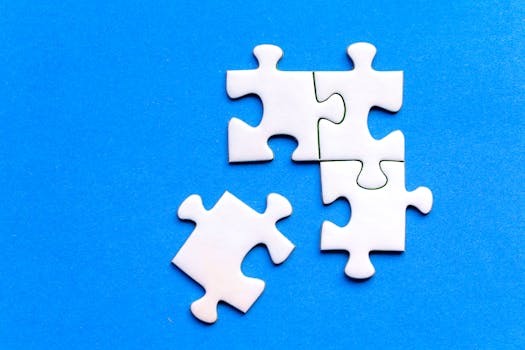What is disconnection strategies?

What is disconnection strategies?
In a world that’s constantly buzzing with notifications, emails, and social media updates, finding the balance between connectivity and personal space has become essential. Disconnection strategies are methods we can apply to carve out pockets of peace in our daily lives. These strategies can help us recharge, improve productivity, and promote a healthier work-life balance. Let’s explore what disconnection strategies are and how they can significantly impact our well-being.
Understanding Disconnection Strategies
Disconnection strategies refer to intentional practices designed to reduce our reliance on technology and foster a greater sense of presence. In today’s hyper-connected society, where smartphones and laptops dominate our attention, disconnecting can feel challenging. However, the purpose of these strategies is to help us regain control over our time and mental space.
The Need for Disconnection
Ever notice how, despite being “connected,” we often feel isolated? The constant influx of information can lead to anxiety and overwhelm. Disconnecting gives us a chance to pause and reflect on our thoughts and feelings. By stepping away from screens, we can engage in activities that truly matter to us, enhancing our overall quality of life. For more insights on the importance of disconnecting, check out this article on unplugging.
Examples of Disconnection Strategies
-
Scheduled Screen-Free Times: Designate specific times each day for a digital detox. This could be during meals or the first hour after waking up.
-
Nature Breaks: Spend time outdoors without your devices. Getting fresh air and enjoying nature can do wonders for your mental health.
-
Mindful Activities: Engage in hobbies like reading, painting, or cooking without any digital distractions. These activities promote mindfulness and creativity.
-
Digital Declutter: Regularly clean up your digital spaces, unsubscribing from unnecessary emails or deleting apps that don’t serve you.
These simple yet effective strategies can help you manage your connectivity and prioritize what truly matters.
Implementing Disconnection Strategies
Integrating disconnection strategies into your daily routine requires commitment and clarity. Here’s how you can start.
Setting Boundaries with Technology
Establish clear guidelines for how and when you use technology. Consider these actionable tips:
- Turn Off Notifications: Disable non-essential notifications to reduce distractions.
- Designate Tech-Free Zones: Keep certain areas of your home, like the bedroom, free from devices.
- Limit Social Media Time: Use apps that track your screen time or set daily limits to keep your usage in check.
By defining your boundaries, you empower yourself to take control of your digital life.
Creating a Disconnection Plan
A personalized disconnection plan can help you stay focused on your goals. Here’s a simple framework to get you started:
- Identify Your Triggers: Recognize when and why you feel compelled to reach for your device.
- Set Specific Goals: Decide how much time you want to spend disconnected each week.
- Choose Activities: Make a list of offline activities you enjoy and can easily integrate into your schedule.
- Track Your Progress: Keep a journal or use apps to log your disconnection hours and feelings.
Creating a structured plan not only makes disconnection easier but also more rewarding.
Benefits of Disconnection Strategies
Implementing disconnection strategies comes with a wealth of benefits. Here are a few key advantages.
Enhancing Focus and Productivity
When we disconnect from our devices, we often find that our focus improves. Reduced distractions lead to deeper concentration, allowing us to accomplish tasks more efficiently. Research suggests that taking breaks from screens can actually boost our productivity levels. This finding aligns with principles discussed in this Forbes article.
Improving Mental Health and Well-Being
Disconnecting from technology can significantly enhance our mental health. Studies indicate that reducing screen time can lower levels of stress and anxiety while promoting emotional resilience. Taking time away from social media can also help combat feelings of inadequacy often triggered by online comparisons. Learn more about the mental health benefits of disconnecting in this detailed exploration on the topic from First Responder Wellness.
Challenges and Solutions in Disconnection
While the benefits are clear, some challenges may arise when trying to implement these strategies.
Overcoming Digital Addiction
Many of us experience a digital addiction, feeling as if we need to check our devices constantly. Here are some strategies to help:
- Use Apps Wisely: Employ apps that encourage you to take breaks, like Forest or Stay Focused.
- Find Alternatives: Replace screen time with engaging offline activities that fulfill you.
- Seek Accountability: Share your disconnection goals with friends or family for support.
By recognizing the need for change and actively working towards it, you can overcome this challenge.
Creating Supportive Environments
It’s easier to disconnect when your environment supports it. Here are some tips for fostering a supportive atmosphere:
- Communicate Your Needs: Let your friends and family know about your disconnection goals so they can respect your boundaries.
- Encourage Group Activities: Plan gatherings where technology is put aside, such as game nights or hikes.
- Model Behavior: Lead by example and show others the positive effects of disconnecting from technology.
Creating a culture that values disconnection can significantly enhance your efforts.
Conclusion
Disconnection strategies are invaluable tools for enhancing productivity and promoting mental well-being. By implementing these strategies, you can reclaim control over your time and attention, allowing yourself to engage in what truly matters. So why not take that first step today? Consider setting aside some time to disconnect; you might just find it to be one of the most rewarding decisions you make. Embrace the power of disconnection and enjoy the benefits it brings to your life.